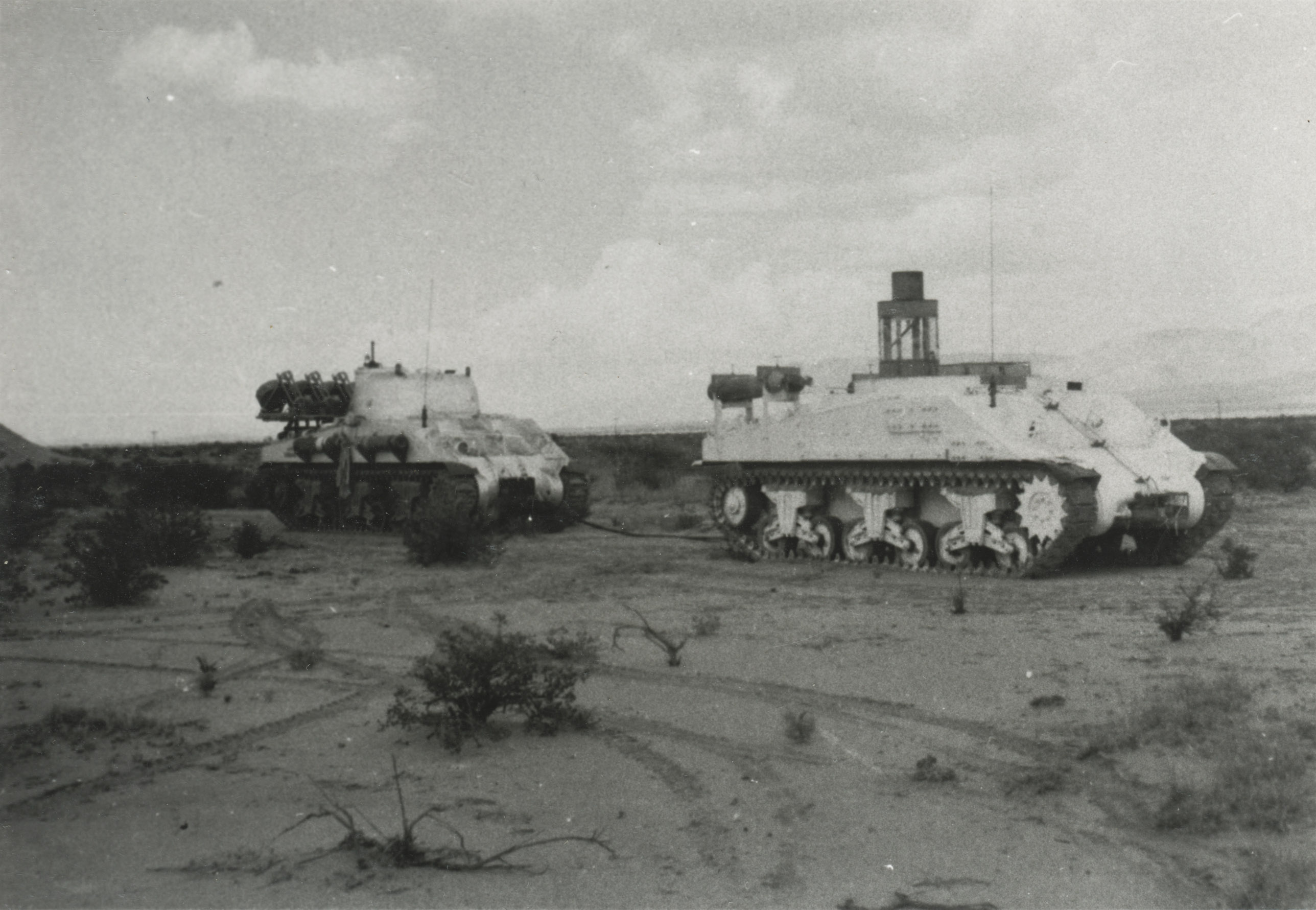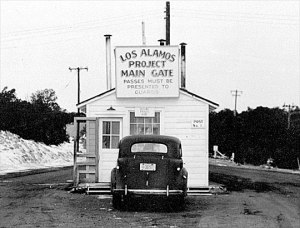
Learn More About Trinity Site
WSMR Museum Videos
Read More About Trinity Site
- Sleeping Beauty Awakens
 LASL’s Sleeping Beauty was an experiment on the design of an alpha-n initiator – the first in a series of such tests. Equipment was located in an underground bunker at Trinity Site in the New Mexico desert, some 250 miles south of Los Alamos – and only 1,600 feet from ground zero of a spectacular success, the world’s first nuclear explosion. But Sleeping Beauty did not involve the use of fissionable material – and she was an embarrassing failure.
LASL’s Sleeping Beauty was an experiment on the design of an alpha-n initiator – the first in a series of such tests. Equipment was located in an underground bunker at Trinity Site in the New Mexico desert, some 250 miles south of Los Alamos – and only 1,600 feet from ground zero of a spectacular success, the world’s first nuclear explosion. But Sleeping Beauty did not involve the use of fissionable material – and she was an embarrassing failure. - Life at Los Alamos
 In November, 1942, Dr. Robert Oppenheimer and Colonel John Dudley visited Jemez Springs, near the Valles Caldera – a large volcanic crater and field in northwest New Mexico. Having considered other locations for the creation of a laboratory, the group found themselves in this remote part of New Mexico in pursuit of a location to bring together the various scattered groups who had been working on “problems” relating to the potential creation of a nuclear bomb.
In November, 1942, Dr. Robert Oppenheimer and Colonel John Dudley visited Jemez Springs, near the Valles Caldera – a large volcanic crater and field in northwest New Mexico. Having considered other locations for the creation of a laboratory, the group found themselves in this remote part of New Mexico in pursuit of a location to bring together the various scattered groups who had been working on “problems” relating to the potential creation of a nuclear bomb. - The Trinity Test Site
 The scientists, technicians, and engineers began arriving in March of 1945 as the pace and scale of operations grew each day. Originally designed to hold 160 people, it eventually held close to 300 and needed to be expanded. At its peak a week before the detonation, there were about 325 engineers, scientists, technicians and soldiers at base camp.
The scientists, technicians, and engineers began arriving in March of 1945 as the pace and scale of operations grew each day. Originally designed to hold 160 people, it eventually held close to 300 and needed to be expanded. At its peak a week before the detonation, there were about 325 engineers, scientists, technicians and soldiers at base camp.

The soldiers assigned to the Trinity Test site did not know their final destination when they received their travel orders to New Mexico. With a few rare exceptions, the soldiers and other personnel who set up the experiment did not know the purpose of their work until the actual explosion took place. To maintain this high level of secrecy, a base camp, the headquarters of the McDonald Brothers Ranch, was established a few miles southwest of Ground Zero. While the soldiers and scientists developed the necessary infrastructure for the test, Trinity Base Camp was their home.

Schmidt/McDonald Ranch House Historical Background
According to granddaughter Rosemary Hall, “The house was adobe with pebble dash outside walls. The inside walls were smooth plaster. Floors were of wood. On the front were concrete half circle steps (now covered by the wood platform built by the Manhattan Project). The roof was tin with 18-inch anchor bolts into the adobe walls. This was because of the high winds. The north side of the house had a filter with charcoal to purify the water from the roof as it went into the cistern for storage. The cellar was part ice house. Ice was cut from the water tanks during the winter. At this time there was no electricity or plumbing, only an outhouse.”

The first atomic test took place at Trinity Site (now Trinity National Historic Landmark) on 16 July 1945. The test was accompanied by experiments designed to measure physical aspects of the explosion, with particular attention to its destructive force. This report describes some elements of the experimental program that accompanied the atomic test, with emphasis on experiments deployed in the core area of the test (radius 1,500 yards from Ground Zero, the location of the bomb).

Trinity at 50: The Archaeology of Trinity Site National Historic Landmark
The nuclear test represented the culmination of an unprecedented collaboration between scientists and the military, forged by the nation’s defense needs arising from World War II… Yet that event had a very humble beginning in an undeveloped, virtually abandoned, isolated ranching area in the Chihuahuan Desert, miles from the nearest town. This is the archaeology of the Trinity Test – both what came before and what was required to test this most awesome device of the twentieth century.
